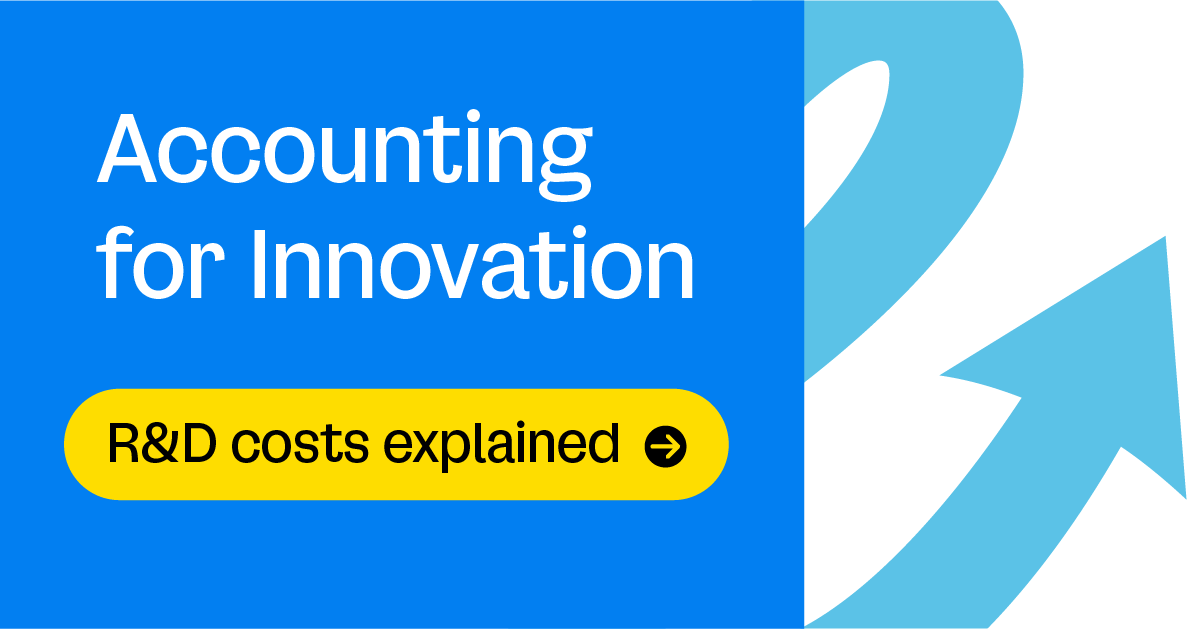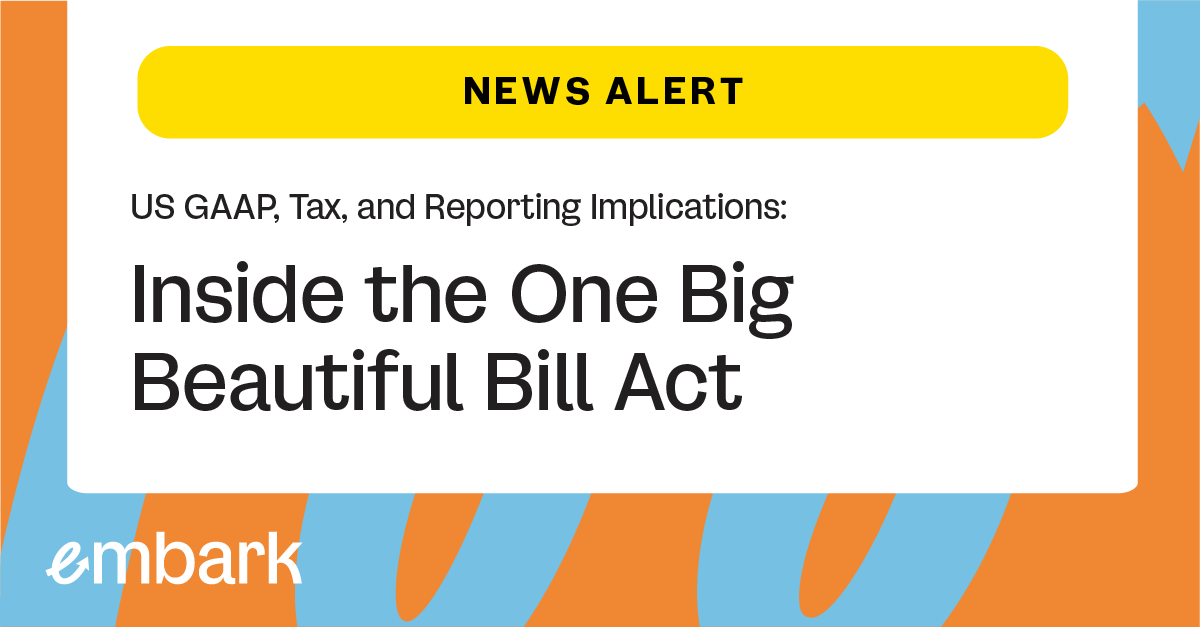
Global headlines are filled with talk of tariffs — and for good reason. With trade policies shifting rapidly, tariff actions are hitting everything from supply chains to balance sheets. Whether it’s the expansion of steel and aluminum tariffs, sweeping proposals for goods from China and other territories, or mounting retaliatory measures from trading partners, the landscape is anything but stable.
But this isn’t just a geopolitical concern. For finance leaders, it’s a real-time business issue — one that cuts across tax, treasury, supply chain, and, most critically, financial reporting. And that means CFOs, controllers, and deal teams need to stay proactive and agile.
Let’s break down what’s happening, what it means for your financial statements, and how you can prepare for what’s next.
Table of Contents |
Tariffs 101: The Policy Lever with Broad Reach
At their most basic level, tariffs are taxes imposed on imported goods. They’re typically used to make foreign products more expensive, thereby encouraging consumers and businesses to buy domestically produced alternatives. While tariffs are often framed as an economic tool, their use extends far beyond trade balances — reaching into geopolitics, industrial policy, and even national security.
For example, recent U.S. tariffs on steel and aluminum were justified on national security grounds, while tariffs on Chinese goods were driven by long-standing concerns around trade imbalances and IP protections. Other measures have been proposed or implemented to influence behavior unrelated to trade — showing how tariffs have evolved into a versatile but blunt policy instrument.
The downstream economic impacts of tariffs are complex and often double-edged. While domestic producers may benefit from reduced competition, higher prices, and greater market share, import-reliant businesses — including manufacturers, retailers, and tech firms — face increased input costs that aren’t always recoverable through pricing. Consumers ultimately feel the impact through higher prices on goods, particularly when alternatives are limited. Tariffs can also trigger broader supply chain disruptions, leading to delays, inefficiencies, and costly long-term adjustments in sourcing and logistics.
Financial Reporting Fallout: Tariffs & the Ripple Effect on Your Financials
Tariffs don’t just live in policy briefings or supply chain spreadsheets — they also ripple through every corner of a company’s financial statements. From top-line revenue to inventory and everything in between, the impact is deep, wide, and, more often than not, complex.
Let’s break down how and where those impacts show up — and what finance teams should be evaluating in today’s tariff-charged environment.
📈 Revenue Recognition
For companies applying ASC 606, tariffs can materially impact both how much revenue is recognized and when it is recognized. This is particularly true for companies using input-based methods to measure progress toward satisfying performance obligations — where tariff-related cost increases directly influence revenue mechanics.
Let’s explore the key areas where tariffs intersect with ASC 606 and why this requires active monitoring by finance teams.
|
Cost-to-cost method impacts |
Companies that recognize revenue over time using the cost-to-cost input method — common in industries like construction, aerospace, defense, and engineering services — are especially vulnerable to changes in input costs driven by tariffs.
|
|
Standalone selling price (SSP) reassessments |
Tariffs can trigger the need to reassess standalone selling prices (SSP), especially in bundled arrangements where goods and services are sold together but priced separately. For instance, if tariffs increase the cost of a hardware component in a hardware-plus-installation bundle, the relative SSP allocation may need to be updated. This reallocation can shift revenue between performance obligations, impacting both the timing of revenue recognition and associated gross margins. |
|
Contract modifications |
Tariffs often lead to customer price renegotiations, especially for long-term or fixed-price contracts. These changes may take different accounting forms under ASC 606:
|
|
Gross vs. net presentation |
Under ASC 606, tariffs are not classified as sales taxes, meaning companies cannot apply the practical expedient that allows certain taxes to be excluded from revenue.
|
📦 Inventory Accounting
Tariffs have a direct and often significant effect on inventory accounting — particularly in product-heavy sectors like retail, consumer goods, manufacturing, and automotive. Under ASC 330, tariffs typically increase the acquisition cost of inventory, and those elevated costs ripple through to financial statements, operational decisions, and risk of impairment.
Here’s how companies should think about the accounting implications:
|
Capitalization of tariffs |
Under ASC 330, import tariffs are treated as a cost directly attributable to bringing inventory to its present location and condition. This means they must be capitalized along with freight, handling, and other acquisition-related costs — not expensed as incurred. As a result:
|
|
Risk of impairment |
As tariff costs swell inventory balances, companies must evaluate whether the net realizable value (NRV) of inventory still exceeds its capitalized cost — or risk triggering an impairment under the lower of cost or NRV model. Scenarios that increase impairment risk include:
|
🧮 Fixed Asset & Intangible Impairments
Tariffs don’t just affect short-term margin performance — they can also drive long-term strategic consequences, particularly when rising input costs, disrupted supply chains, and constrained pricing power begin to erode the economic value of assets. Under both ASC 360 (long-lived assets) and ASC 350 (goodwill and indefinite-lived intangibles), these conditions can trigger impairment reviews and significantly affect the balance sheet.
Here’s how tariff exposure plays into the impairment landscape:
|
Long-lived assets |
Under ASC 360, companies must evaluate whether long-lived asset groups — such as property, plant, equipment, leasehold improvements, or capitalized internal-use software — are recoverable if indicators of impairment exist. Tariffs can directly contribute to those indicators by diminishing expected cash flows and altering operating assumptions.
|
|
Goodwill & indefinite-lived intangible assets |
Goodwill and indefinite-lived intangibles are tested for impairment at least annually, or more frequently if triggering events occur — such as market disruptions or cost structure changes that could impact fair value. Tariff-related changes can create exactly that kind of trigger.
|
|
Fair value measurements |
When an impairment test under ASC 360 or ASC 350 requires a fair value estimate, companies often rely on discounted cash flow (DCF) models under ASC 820. Tariffs introduce new complexity into those models — and elevate the need for defensible assumptions.
|
🧾 Income Taxes
Tariffs don’t just affect operational costs and financial reporting — they also introduce complex challenges in the tax realm. While tariffs themselves are not tax-deductible expenses for book purposes (they’re capitalized into inventory under ASC 330), they indirectly influence taxable income, effective tax rates, and transfer pricing positions, particularly in global operating structures.
Here’s how tariff exposure may play into your current and deferred tax accounting:
|
Deferred tax assets & valuation allowances |
Tariffs can put pressure on a company’s bottom line — and that pressure often flows through to deferred tax asset realizability.
|
|
Transfer pricing considerations |
Tariffs often force companies to reconfigure supply chains — moving production, changing suppliers, or restructuring intercompany transactions — all of which raise important tax and compliance questions.
|
|
Global minimum tax considerations (Pillar Two) |
Tariffs also have implications under the OECD’s Pillar Two global minimum tax regime, which requires multinational enterprises to maintain a 15% effective tax rate in each jurisdiction. Rising input costs from tariffs can reduce local profitability and push effective tax rates below the threshold, potentially triggering top-up tax liabilities — especially in low-tax jurisdictions. Companies must reassess how tariff costs are allocated across entities, particularly in complex structures with contract manufacturers or shared services, where flow-through is less clear. These changes may also affect book-tax timing differences, requiring updates to deferred tax asset and liability recognition. |
📃 Disclosures & Subsequent Events
Tariffs introduce uncertainty that goes beyond operational disruptions — they can materially impact financial assumptions, pricing strategies, and future performance. As a result, companies must ensure those risks are appropriately reflected across their financial statements and public filings. Transparent, timely disclosure is critical not only for compliance, but also for preserving stakeholder trust during periods of global trade instability.
|
Risks & uncertainties |
Under ASC 275, companies must disclose known risks and uncertainties that could significantly affect estimates used in preparing financial statements — especially when it’s reasonably possible those estimates will change in the near term. In a tariff environment, that could include:
These disclosures should describe the nature of the uncertainty, how it could affect financial results, and which areas of the financials are most exposed. Boilerplate language won't cut it — companies should tailor disclosures to reflect the specific risks tariffs pose to their business model and reporting areas. |
|
Subsequent events |
ASC 855 governs the treatment of events occurring after the balance sheet date but before the issuance of financial statements. In the context of tariffs, this could include:
If these events provide evidence of conditions that existed at the balance sheet date, they may require recognition in the financials (Type I events). If not, they may still warrant disclosure as non-recognized subsequent events (Type II), particularly if the new developments could influence investor or stakeholder decisions. Even when tariffs don’t materially change current-period balances, transparency around evolving trade risks helps set expectations and demonstrates proactive management oversight. |
|
SEC Considerations: Risk factors, MD&A, and forward-looking information |
For public companies, tariffs must be evaluated within the context of SEC reporting obligations — especially when they materially affect performance, strategy, or financial outlook.
|
🏦 Going Concern Assessments
Tariffs don’t just create financial reporting noise — in some cases, they can present real threats to a company’s ability to continue operating. Under ASC 205-40, management is required to assess whether substantial doubt exists about the entity’s ability to meet its obligations as they come due within one year of the financial statement issuance date.
When tariffs significantly disrupt supply chains, compress margins, or destabilize pricing models, this assessment becomes more than a formality — it can raise real red flags, particularly for middle market companies or firms with concentrated exposure to tariff-sensitive goods.
Here are some of the most common indicators that should prompt a closer look at going concern risk:
|
Contract cancellation or customer losses |
If key customers cancel or delay orders due to price increases or delivery uncertainty, expected revenues may fall short, threatening the company’s ability to cover fixed costs and near-term obligations. |
|
Margin erosion |
Sustained tariff impacts can compress gross margins to the point where operational profitability becomes unsustainable — especially when companies lack pricing power or have fixed-price contracts that can’t be quickly renegotiated. |
|
Difficulty sourcing materials or alternatives |
If critical inputs become cost-prohibitive, delayed, or unavailable due to trade restrictions, and viable alternatives aren’t immediately accessible, operations may grind to a halt — creating both liquidity issues and reputational risk with customers. |
|
Cashflow delays or working capital strain |
Higher inventory costs, elongated supply chains, or reduced sales velocity can all lead to cash flow pressure. If cash collections slow down or working capital needs unexpectedly spike, the company may be unable to service debt, pay vendors, or meet payroll obligations in the near term. |
Beyond the Balance Sheet: What Leaders Should Consider Next
Tariffs may start with tax codes and trade policy, but their reach goes far beyond import fees. They are now a core consideration in corporate governance, financial planning, and strategic decision-making. Boards and executive teams alike are realizing that tariffs aren’t just a sourcing or pricing problem — they’re a broad-based risk that touches every corner of the enterprise.
Here’s what organizations should be thinking about now — not just to stay compliant or mitigate risk, but to build resilience and uncover new opportunities in the face of ongoing tariff uncertainty.
|
Elevate Tariff Strategy to a Governance-Level Priority |
Tariffs are reshaping trade policy at a scale not seen in decades, and companies must treat them as part of enterprise risk management — not just a procurement issue. Boards should challenge management to present a clear, well-vetted tariff strategy: What alternatives were considered? What assumptions underpin the plan? How will it adapt as policy changes? This strategy should be reviewed regularly and integrated into broader financial and operational planning. |
|
Make Scenario Planning an Ongoing Discipline |
Tariff rates, affected product categories, and geopolitical stances can all shift rapidly — making static planning obsolete. Leading companies are building flexible models that incorporate best-, base-, and worst-case tariff outcomes. These models should estimate financial impact across cost of goods sold, margin profiles, sourcing structures, and even customer behavior. Boards should ensure there’s a cadence of review and that the company is prepared to act on its playbooks — not just develop them. |
|
Balance Forecasting Needs with Execution Capacity |
Finance teams are under pressure to model constant trade scenarios while managing the day-to-day needs of the business. This can stretch resources thin and delay decision-making. Boards and executive leaders should ensure the finance function is adequately staffed and supported, so forecasting doesn’t come at the expense of closing the books, managing liquidity, or delivering on transformation initiatives. It’s not enough to plan for uncertainty — companies must also be able to operate effectively in it. |
|
Reinforce Tariff Compliance Processes |
Beyond strategy, tariffs carry real compliance risk. Incorrect tariff classifications or failure to monitor updates from U.S. Customs and global trade authorities can lead to costly fines and audit complications. Companies should routinely validate their classifications, review intercompany pricing structures, and update invoicing practices to ensure tariff costs are properly reflected. Compliance should be embedded in operational workflows, not treated as a one-off exercise. |
|
Integrate Currency and Inflation Impacts into Planning |
Tariff policy and macroeconomic trends are closely linked. A weakening U.S. dollar, for instance, may increase the cost of imported goods and trigger inflationary pressure — further impacting demand and pricing flexibility. Management should incorporate FX scenarios and inflation trends into their tariff response plans, adjusting capital deployment, pricing strategies, and tax planning accordingly. Boards should also assess how these variables might influence long-term consumer behavior and business model sustainability. |
|
Rethink M&A Strategy Through a Trade Lens |
Tariff uncertainty is reshaping deal flow. Buyers are pressing pause between LOI and close to better understand cost exposures, working capital volatility, and margin risk. Meanwhile, well-positioned companies are using M&A to gain scale and supply chain leverage. Boards and deal teams should view transactions not just as growth plays, but as opportunities to build resilience — particularly through acquisitions that diversify supplier bases or improve operational flexibility. |
|
Turn Disruption into Competitive Advantage |
While tariffs can squeeze margins, they also create room for strategic differentiation. Companies that respond quickly — whether by repricing dynamically, reengineering sourcing, or increasing product value — can emerge stronger than peers who delay. Boards should push management to explore how trade disruption might reveal new growth avenues, cost-efficiency gains, or customer loyalty drivers. In volatile environments, the companies that thrive are often the ones that lean in early and adapt fast. |
Final Thoughts: Staying Ahead of the Curve
Tariffs are here — and they’re not going away anytime soon. But they don’t have to catch your organization flat-footed.
At Embark, we’re helping companies across sectors navigate these evolving challenges — from revenue recognition and impairment modeling to deal diligence and working capital strategy. The key is proactive planning and cross-functional collaboration — finance, tax, legal, and operations all need to work together.
If you’re unsure how tariffs are impacting your financial reporting or want help building a mitigation playbook, reach out. We’re here to help you keep your financials — and your business — in step with this ever-changing global dance.






